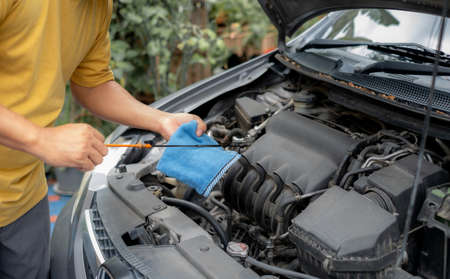1. Understanding Engine Internals and Their Role
When it comes to improving how quickly your car accelerates and how efficiently it runs, the parts inside the engine—often called engine internals—play a huge role. Some of the most important engine internals include pistons, connecting rods, and crankshafts. These components move up and down or spin thousands of times per minute whenever you press on the gas pedal. The weight of these parts makes a real difference in how your engine behaves and how much power your vehicle can put to the road.
Key Engine Internals and Their Functions
| Component | Main Function | Impact of Weight |
|---|---|---|
| Pistons | Move up and down in the cylinders to compress air and fuel, creating power | Lighter pistons reduce resistance, making it easier for the engine to rev quickly and use less fuel |
| Connecting Rods | Connect pistons to the crankshaft, transferring motion | Lighter rods decrease stress on other parts and help the engine respond faster to throttle input |
| Crankshaft | Converts up-and-down motion of pistons into rotational force that turns the wheels | A lighter crankshaft spins more easily, allowing for quicker acceleration and smoother operation |
Why Mass Matters in Engine Performance
The mass (or weight) of these moving parts is important because every time they move, the engine uses energy to overcome their inertia. In simple terms, heavier parts take more effort—and therefore more fuel—to get moving. When you swap out heavy factory parts for lightweight versions made from materials like forged aluminum or titanium, it takes less energy for your engine to spin up. This means your car can accelerate faster, feels more responsive when you hit the gas, and often uses less fuel since the engine doesn’t have to work as hard.
The Benefits at a Glance
- Quicker Acceleration: Lightweight internals help your car respond instantly when you step on the pedal.
- Improved Efficiency: Less energy wasted moving heavy parts leads to better miles per gallon.
- Smoother Operation: The engine runs with less vibration and stress on critical components.
2. The Science Behind Weight Reduction
When it comes to making your car faster and more efficient, one of the smartest moves is reducing the weight of your engine’s internal components. But why does this work? Let’s break down the science in a way that’s easy to understand, even if you’re not a gearhead.
Understanding Rotational Mass
Inside your engine, parts like pistons, connecting rods, and the crankshaft move up and down or spin every time you hit the gas. These parts have what’s called “rotational mass.” The heavier these parts are, the harder your engine has to work to get them moving and keep them spinning at high speeds.
How Lighter Internals Make a Difference
By swapping out heavy stock components for lighter ones made from materials like forged aluminum or titanium, you lower the rotational mass inside your engine. This means:
- Your engine can rev up faster because there’s less weight to move.
- The throttle response improves—you’ll notice your car reacts quicker when you press the gas pedal.
- You use less energy (fuel) to keep things spinning, which can boost efficiency.
Quick Comparison: Heavy vs. Lightweight Engine Parts
| Component | Stock (Heavier) | Lightweight Upgrade | Impact on Performance |
|---|---|---|---|
| Pistons | Cast Iron/Steel | Forged Aluminum | Faster Revving, Less Stress on Engine |
| Connecting Rods | Steel | Titanium/Aluminum Alloy | Quicker Throttle Response, Lower Vibration |
| Crankshaft | Cast Iron/Steel | Billet Steel/Lightweight Forged Alloy | Smoother Acceleration, Higher RPM Potential |
The Real-World Effect: Faster Acceleration and Better MPG
If you’ve ever watched drag racing or track days in America, you’ll know how important split-second acceleration is. Lightweight internals don’t just help racers—they also make daily driving feel more responsive. Plus, because your engine doesn’t have to work as hard, you might even see a slight bump in fuel economy.

3. Performance Gains: Acceleration and Efficiency
How Lightweight Engine Internals Boost Acceleration
When it comes to making your car quicker off the line, lightweight engine internals make a real difference. Components like pistons, connecting rods, and crankshafts are constantly moving at high speeds. When these parts weigh less, your engine doesnt have to work as hard to move them. This reduction in whats called “reciprocating mass” means your engine can rev up faster and deliver power more quickly to the wheels. That translates into better 0-60 times—something every car enthusiast loves.
Real-World Example: 0-60 MPH Improvements
| Component Upgrade | Typical 0-60 MPH Improvement |
|---|---|
| Stock Internals | 6.5 seconds |
| Lightweight Pistons & Rods | 6.0 seconds |
This table shows how a switch to lightweight internals can shave off crucial tenths of a second from your acceleration times. While results vary based on the vehicle and other modifications, its clear that less weight inside your engine leads to a snappier response when you hit the gas.
Better Fuel Efficiency Without Sacrificing Reliability
Its not just about going fast—lightweight engine parts help you go farther on every gallon of gas, too. Because your engine spends less energy moving heavy parts, more of its power goes toward driving your car forward. That means improved miles per gallon (MPG), which is great for both daily commuters and weekend cruisers. Plus, modern lightweight components are designed using advanced materials like forged aluminum or titanium, so they maintain strength and durability even under tough conditions.
Efficiency Comparison
| Engine Setup | Average MPG |
|---|---|
| Standard Internals | 25 MPG |
| Lightweight Internals | 27 MPG |
The numbers above highlight that swapping in lighter engine internals gives you a bump in fuel efficiency without forcing you to compromise on reliability or performance.
A Balanced Upgrade for Everyday Drivers and Enthusiasts Alike
If youre looking for an upgrade that delivers both speed and savings at the pump, lightweight engine internals are a smart choice. Whether you’re chasing quicker times at the track or just want a smoother daily drive with fewer trips to the gas station, going lighter inside your engine pays off in more ways than one.
4. Aftermarket Upgrades and Material Choices
Popular Lightweight Engine Parts in the U.S.
When it comes to making your car accelerate faster and run more efficiently, many American car enthusiasts look to aftermarket upgrades for lightweight engine internals. Swapping out heavier factory parts for lighter ones helps the engine rev quicker and reduces stress on other components. Below are some of the most popular lightweight options found in the U.S. aftermarket scene:
| Part | Common Lightweight Materials | Main Benefits |
|---|---|---|
| Pistons | Forged Aluminum, Titanium | Reduces reciprocating mass, quicker revs, improved throttle response |
| Connecting Rods | Aluminum, Titanium | Lighter weight, stronger than stock, allows higher RPMs |
| Crankshafts | Billet Steel, Lightweight Alloys | Smoother operation, less rotational inertia, better efficiency |
| Flywheels | Aluminum, Chromoly Steel | Faster engine response, improved acceleration, easier shifting |
Why Americans Love These Upgrades
American car culture is all about performance and personalization. Enthusiasts enjoy modifying their vehicles not just for straight-line speed but also for better handling and responsiveness. Lighter engine internals are especially appealing because they offer real performance gains without sacrificing reliability when chosen wisely. Forged aluminum and titanium parts are favorites due to their strength-to-weight ratio—they can handle high power levels while shaving off pounds from under the hood.
Material Comparison: Forged Aluminum vs. Titanium
| Feature | Forged Aluminum | Titanium |
|---|---|---|
| Weight Reduction | Excellent (very light) | Outstanding (even lighter) |
| Strength/Durability | Very good for most builds | Superior, great for high-performance applications |
| Cost | More affordable option | Premium price tag |
| Main Appeal in U.S. | Balance of price and performance; widely available for many models | The ultimate choice for serious racers and enthusiasts seeking top-tier performance at any cost |
The Bottom Line on Aftermarket Choices
If you’re looking to boost your car’s acceleration and overall efficiency, swapping to lighter engine internals is a tried-and-true approach in America’s automotive world. With so many material options and aftermarket brands available stateside, there’s something for every budget and build type—whether you’re chasing quarter-mile times or just want a more responsive daily driver.
5. Trade-Offs and Considerations
Upgrading to lightweight engine internals can offer big gains in acceleration and efficiency, but it’s important to weigh the trade-offs before making any decisions. Let’s take a closer look at some key considerations you should keep in mind if you’re thinking about making the switch.
Potential Downsides of Lightweight Engine Internals
While lighter components like pistons, rods, and crankshafts reduce rotational mass and help your engine rev faster, there are a few areas where they might not be perfect for every car owner:
| Factor | Upside | Downside |
|---|---|---|
| Cost | Better performance per dollar spent for enthusiasts | High-quality lightweight parts can be expensive to buy and install |
| Longevity | Lighter parts reduce stress on other engine components | Some lightweight materials may wear out faster or be less durable than stock parts, especially under harsh conditions |
| Street Drivability | Smoother and quicker throttle response | Might make the car harder to drive smoothly in stop-and-go traffic; sometimes increases engine noise or vibration |
Daily Driving vs. Track Use
If your car is mostly a daily driver, you’ll want to think carefully about how these changes could affect your comfort and reliability. Many lightweight internals are designed with racing in mind—where maximum performance matters more than how easy the car is to live with every day.
Questions to Ask Yourself Before Upgrading:
- Is this my primary vehicle for commuting?
- Am I prepared for possible increases in maintenance?
- Do I want ultimate speed, or is reliability more important?
By understanding these trade-offs, you can make a smart decision that fits both your performance goals and your lifestyle.


